



Collapsible content
You can play Corner Center Match with 2-6 players, ages 7 and up.
Corner Center Match is great for Shapes & Color Matching as players use pattern recognition to quickly identify the center shape and review their cards to find a matching corner shape.
Corner Center Match also helps with Focus and Self-Control as players concentrate on the target cards on the table and the shapes in their hand to play their cards efficiently.
Shuffle the cards and place one in the middle of the play area as the first target card.
Evenly deal out the remaining cards to all players, placing any leftover cards back in the game box.
Each player tries to match the colors and shapes on the corners of their cards to the center shapes on the target cards. Players must identify matches and react quickly to stay ahead of the competition and be the first person to match all of their cards to win.
Each shape card is double-sided and features four types of shapes (squares, stars, circles, and crosses) and four colors (orange, yellow, blue and purple).
On each side, the center of the card shows one solid shape in one color. Each corner shows one of the four shapes as an outline in one of the four corners. Players use the corner shapes to match the center shape on a target card in the center of the play area. A shape card becomes a target card once it is played.
There is no taking turns; everyone plays as fast as they can to get rid of all their cards. When all players are ready, one player flips over the first target card, revealing a center shape. Players race to find a card in their hand with a corner that matches both the shape and color of the target card’s center shape. Since the cards are double-sided, players should look at both sides of their cards to help make matches during the game.
Once a player has found a corner that matches, they put their matching card on top of the target card in the center of the play area. This newly played card becomes the next target card; all players now race to make a match based on the new center shape at the top of the pile in the play area.
Note: During the game, if no player can make a match, flip over the current target card and match against the center shape found on the opposite side.
Players continue to make their matches until one player runs out of cards.
The first player to match all of their cards wins the game.
Swiftly identify colors and shapes in this race to match corner to center with Corner Center Match!

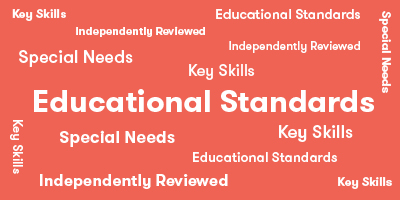
Core Standard*: Math
- Math
- Reason with shapes and their attributes: Grade Level 2nd, 3rd
- Geometry

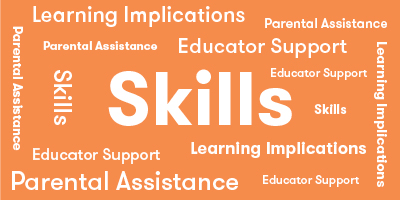
Explore
What Does Child Do To Use Skill In The Game?
Players look at the cards being turned up, as well as those in their hand, to see what attributes (whole shape, partial shape and color) are on the card.
How Parents Can Assist Learning
Allow children to closely examine the cards before playing so the can familiarize themselves with the attributes.
Learning Implications and Educator Support
Allow children to closely examine the cards before playing so the can familiarize themselves with the attributes.
Determine
What Does Child Do To Use Skill In The Game?
Players need to determine what attributes (whole shape, partial shape and color) are on each card that is turned over as well as those in their hands. They also need to determine if a card in their hand has a corner that matches the whole shape and color of the card in the middle of the table.
How Parents Can Assist Learning
To help children determine what to look for when cards are being turned over, encourage them to examine the cards in their hands to look for possible matches of corners shapes to whole shapes. When first learning to play Corner Center Match, children can try matching just one attribute, such as color, of the cards being turned over.
Learning Implications and Educator Support
Corner Center Match helps develop observational, visual spatial and association skills. To help children determine what to look for when cards are being turned over, encourage them to examine the cards in their hands to look for possible matches. When first learning to play, children can try matching just one attribute, such as color, of the cards being turned over. Corner Center Match is also good for developing quick thinking skills as all players are racing to play a matching card before the other players.
Compare
What Does Child Do To Use Skill In The Game?
Comparing is a primary skill being used in Corner Center Match as players need to compare and find common shape and color attributes in order to make winning matches.
How Parents Can Assist Learning
To help children determine what to look for when cards are being turned over, encourage them to examine the cards in their hands to look for possible matches. When first learning to play, children can try matching just one attribute, such as color, of the cards being turned over.
Learning Implications and Educator Support
Corner Center Match helps develop observational, visual spatial and association skills, which are happening nearly simultaneously. To help children determine what to look for when cards are being turned over, encourage them to examine the cards in their hands to look for possible matches. When first learning to play, children can try matching just one attribute, such as color, of the cards being turned over.
Practice
What Does Child Do To Use Skill In The Game?
Players practice observation, visual spatial and quick thinking skills by trying to match a corner shape and color from a card in their hand to the whole shape and color of the card in the center of the table.
How Parents Can Assist Learning
When children are first learning the game, practice by holding up a card and having the child name the attributes of the corners and the center shape as fast as possible. When the child can accurately name them quickly, they are ready to play.
Learning Implications and Educator Support
When children are first learning the game, practice by holding up a card and having the child name the attributes of the corners and the center shape as fast as possible. When the child can accurately name them quickly, they are ready to play.
Review
What Does Child Do To Use Skill In The Game?
If Player 2 challenges the move of Player 1, they will review to determine if the Player 1 accurately made a match
How Parents Can Assist Learning
Celebrate if children accurately make matches correctly. This will help reinforce a child's confidence. If the child made a mistake, review it with him or her to help her learn how to do it accurately next time.
Learning Implications and Educator Support
To help bolster confidence and motivation, provide positive reinforcement if children accurately make matches correctly. If the child made a mistake, review it with him or her to help her learn how to do it accurately next time or to improve memory skills. Positively, reinforce the child who caught the error. Choosing the right match and catching an error at the same time requires double the attention!
Demonstrate
What Does Child Do To Use Skill In The Game?
Players will demonstrate if they accurately created matches by placing a card in their hand on to the card pile in the center of the table.
How Parents Can Assist Learning
Celebrate if children accurately make matches correctly. This will help reinforce a child's confidence. If the child made a mistake, review it with him or her to help her learn how to do it accurately next time.
Learning Implications and Educator Support
To help bolster confidence and motivation, provide positive reinforcement if children accurately make matches correctly. If the child made a mistake, review it with him or her to help her learn how to do it accurately next time or to improve memory skills. Reinforce children who caught the error. They are demonstrating double recognition by seeing the correct match and the error at the same time.
*Data compiled from CCSSI ELA Standards, WA Science Standards, and Washington Social Studies Standards

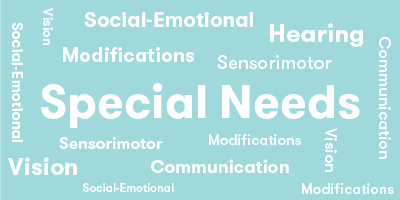
Cognitive
Suggestions for How to Modify Play Experience
If matching part to whole is too difficult for a child, allow them to match the center card's middle shape and/or color to a middle shape and/or color in their hand.
Children with cognitive delays may take longer to process the information in their hand to the match card. Instead of having all players matching at once, take turns laying a card. Give each player a set amount of time (20 seconds) before they must pass the
Play with 5-7 cards per player to allow the child to be able to manipulate and examine the cards more carefully. Have a draw pile so the cards can be replenished as they are laid down. A card holder may also be helpful to make it easier to see all of the symbols on the cards in one's hand.
Communication
Suggestions for How to Modify Play Experience
No communication is needed, but players can be encouraged to shout out the shape they are matching. This give the child practice in naming shapes.
Sensorimotor
Suggestions for How to Modify Play Experience
If children have fine motor concerns, manipulating many cards will be difficult. Reduce the number of cards in each players hands (5 to 7), and let a child use a card holder made from folded construction paper or light cardboard. This enables the child to see all cards at one time and pull a card to lay down more quickly.
Reduce the need for speed by taking turns and limiting the number of cards each player must hold (4 or 5). Take turns finding a match and pass to the next player if a match is not found. Draw a card when one is laid down. The game is over when the draw deck is empty and a player plays their last card.
Social Emotional/Behavioral
Suggestions for How to Modify Play Experience
This game may be frustrating for children who need time to process visual information. Modify the game to reduce the number of cards each player has to 7-10, depending on group preference. Play in rounds, so the first person out of cards wins that round. Then deal a new round.
Modify the game so turns are taken. Reduce the number of cards to 5-7 per player. Each player tries to find a match or pass. When a card is laid another is drawn. The game is over when the draw deck is empty and a player plays their last card.
Allow the child to lay all cards out on the table.
Vision
Suggestions for How to Modify Play Experience
Children with vision concerns may be confused by the complexity of mixed designs on one card. Play with fewer cards (3-4 cards) to allow players to lay the cards out in front of themselves to examine cards more carefully. Also take turns playing a card to reduce stress from time pressure. If no match is found on either side, the player must pass. The game is over when the draw deck is empty and a player plays his/her last card.
There is more contrast between shapes and background for some colors, making some shapes easier to see. Trace the shapes on each card with a thin black marker. This will enhance the child's ability to see the shape.
For children with severe vision issues, Corner Center Match is too challenging.
Hearing
Suggestions for How to Modify Play Experience
Hearing should not be a concern, as players do not need to talk.
*Data compiled from CCSSI ELA Standards, WA Science Standards, and Washington Social Studies Standards

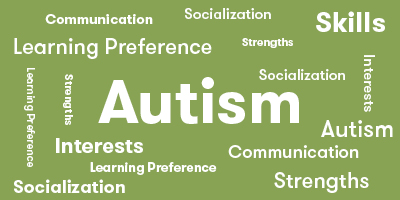
Autism Strengths & Interests
Short Summary of Strengths & Interests
- Good at determining the whole pattern from a part of the pattern.
- Prefers games that are very concrete and literal.
- Likes to make visual matches, especially quicker than other players.
Is good at matching visual items
Is This Game Appropriate? Yes
Description
Children who excel at matching visual parts to wholes will do well with this game. An example of part to whole matching is seeing part of an animal (ex: tail of a horse) and knowing the whole animal. This type of matching is key to success in this game.
Has a good memory for sensory details, including visual, touch, taste and smell
Is This Game Appropriate? Yes
Description
Children who like to focus on or are good at picking out details will use those skills in Corner Center Match. The entire game is built around matching the part and color of a shape to the whole shape on the face up card. Some children with autism can see patterns easily, so Corner Center Match may be a good game for children with this skill.
Has a good memory for words, phrases and dialouge
This game is not appropriate
Has a good memory for pictures, numbers and patterns
Is This Game Appropriate? Yes
Description
Children with good memory for shapes will do well in Corner Center Match. This is because they need to recall four different shapes on each card in their hand, looking for a match to the face up card on the pile.
Likes to put things in order or a sequence
This game is not appropriate
Learns through visualizing or "replaying" actions in their mind
This game is not appropriate
Likes activities with rules, such as math and phonics
This game is not appropriate
Is very concrete and literal
Is This Game Appropriate? Yes
Description
Corner Center Match does not require abstract or analogous thinking. All of the cards have clear color and shape, so children who prefer concrete and literal activities may feel comfortable with this game.
Learns in small "chunks" (for example, phone numbers are 3 chunks of number xxx-xxx-xxxx that are combined together)
This game is not appropriate
Is good at nonverbal reasoning and logic
Is This Game Appropriate? Yes
Description
Corner Center Match is a good game for the child who is good at seeing details, matching colors and can see how parts of a shape are related to whole shapes. Reasoning with shape and color does not require any verbalization. Rather, Corner Center Match benefits children who can think and act quickly, because all players are racing to place their cards down first.
Likes spatial problem solving
Is This Game Appropriate? Yes
Description
Corner Center Match is a good game for the child who is good at seeing details and can see how parts of a shape are related to whole shapes. The players only need to identify two characteristics, color and shape to be able to play the game. Some children with autism can see patterns easily, so Corner Center Match may be a good game for children with this skill.
Can read well with good vocabulary, though may not fully comprehend content
This game is not appropriate
Likes to use and has good fine motor skill
This game is not appropriate
Likes established routines or set ways of doing things
This game is not appropriate
Likes manipulating, constructing or building things
Is This Game Appropriate? Yes
Description
Likes to use and has good musical abilities
This game is not appropriate
Likes to use and has good drawing skills
This game is not appropriate
Autism Special Considerations
Appears to ignore other's communication and/or has difficulty giving eye contact to a communication partner
Is This Game Appropriate for Child with Characteristic? Yes
Can Child with Characteristic Play Game w/o Modification? Yes
Strategies for Developing Compensatory Skills:
Corner Center match does not require eye contact or communication. The children focus on their cards independently and works quickly to make a match. As a result, the child may miss errors made by other players.
Has difficulty understanding complex verbal directions
Is This Game Appropriate for Child with Characteristic? Yes
Can Child with Characteristic Play Game w/o Modification? No
Strategies for Developing Compensatory Skills:
The child should be able to comprehend the rules of the game with several demonstrations using various card patterns.
Uses vocabulary inaccurately or demonstrates echolalia (repeating another's speech)
Is This Game Appropriate for Child with Characteristic? Yes
Can Child with Characteristic Play Game w/o Modification? Yes
Strategies for Developing Compensatory Skills:
If the child is talking about irrelevant things during the game, other players may find this distracting. Encourage children to name the shape they are laying down. This will discourage rote comments.
Gets stuck repeating a verbal topic or physical actions and/or has difficulty attending to others' actions or topic.
Is This Game Appropriate for Child with Characteristic? Yes
Can Child with Characteristic Play Game w/o Modification? No
Strategies for Developing Compensatory Skills:
The child may get stuck on a certain preferred shape and begin matching just the star corners, for example, while ignoring the center shape. Other players may need to slow the game down and take turns laying cards until the child comprehends the match of the corner shapes to the center shape.
Has difficulty producing speech/communication
Is This Game Appropriate for Child with Characteristic? Yes
Can Child with Characteristic Play Game w/o Modification? Yes
Strategies for Developing Compensatory Skills:
No communication is needed, but can be encouraged.
Has difficulty sequencing multi-step actions and/or doing complex abstract tasks
Is This Game Appropriate for Child with Characteristic? Yes
Can Child with Characteristic Play Game w/o Modification? Yes
Strategies for Developing Compensatory Skills:
The same logical reasoning is used for each turn, so the child does not need to shift actions or approach.
Demonstrates difficulty initiating and maintaining social interactions
Is This Game Appropriate for Child with Characteristic? Yes
Can Child with Characteristic Play Game w/o Modification? Yes
Strategies for Developing Compensatory Skills:
Everyone plays at the same time, so social interaction and turn-taking is not needed. The child may need turns, however, to allow more time to think and process the visual options.
Acts out or demonstrates avoidance behaviors when frustrated, overwhelmed, or needs more sensory input.
Is This Game Appropriate for Child with Characteristic? Yes
Can Child with Characteristic Play Game w/o Modification? No
Strategies for Developing Compensatory Skills:
The child may get frustrated when other players are quicker to lay down their cards. An option is to take turns, with players having only a set number of cards, such as 7 cards each. Players can take more time to find a match and pass if they do not have a match on either side of their cards.
Has short attention span for non-preferred activities
Is This Game Appropriate for Child with Characteristic? Yes
Can Child with Characteristic Play Game w/o Modification? No
Strategies for Developing Compensatory Skills:
Many children with autism like patterns, matching games, and visual-spatial reasoning. If this is a preferred activity, the child may attend well to Corner Center match. If this is not a preference, the game may be too frustrating.
Needs sameness or consistent routines and/or has difficulty with transitions from one activity to another
Is This Game Appropriate for Child with Characteristic? Yes
Can Child with Characteristic Play Game w/o Modification? Yes
Strategies for Developing Compensatory Skills:
The expectations for each turn are the same in this game, so the child is not required to shift thinking strategies. Transitioning from another activity to Corner Center Match may be facilitated by connecting the game to something the child enjoys. For instance, give the child a card and say, "What shape do you like best? Let's go find another one like it?" "Or let's go find the other cards to match it?"
Has difficulty understanding others' feelings, intentions, and the reasons for others' actions.
Is This Game Appropriate for Child with Characteristic? Yes
Can Child with Characteristic Play Game w/o Modification? Yes
Strategies for Developing Compensatory Skills:
Recognizing others' feelings is not important in this game, but the child may need support to understand that others' are working fast to find more matches. If this competitive aspect is too stressful, an option is to take turns, with players having only a set number of cards, such as 7 cards for each player. Players can take more time to find a match and pass if they do not have a match on either side of their cards.
*Data compiled from CCSSI ELA Standards, WA Science Standards, and Washington Social Studies Standards

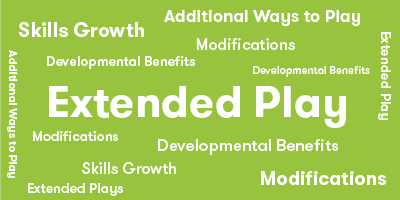
Extra Ways to Play the Game
Search through the large deck to find two cards with the same shape and color in the center. When you have found 8 sets of matches, shuffle them and lay them face down in a 4 X 4 pattern. Players then take turns trying to find the shape and color matches on the other side of the cards. On their turn, a player turns over 2 cards. If the center shape and color match, the player takes the pair of cards. The player with the most matches wins. The number of cards can be increased (example, use 12 or 16 cards) as players gain skill.
Materials Needed
No extra materials needed.
Developmental Benefits
This is a memory game, but it is made more difficult because of the confounding shape and color on the opposite sides of the cards. The child will see the shape and color of the top of the card, but must override this by remembering what is on the opposite side of the card. In other words, the player must remember the top shape and color clue to help him remember the bottom shape and color.
Extra Ways to Play the Game
Make the cards into a shapes puzzle: Deal out all of the cards to the players. The first player places one card in the center of the floor. Players must then find exact shape and color matches for one side of the card and lay it down to add on to the side pattern. Players continue to find matches to cards' corner pattern shapes and colors as quickly as they can. As cards are added, players will need to match two sides, or even three. The player who gets rid of all of their cards first wins. If no one can get rid of any more cards, the player with the fewest cards remaining wins. Either side of the cards can be used to make a match. Note: star corners will form a four-pointed, eight-sided shape.
Materials Needed
No extra materials needed.
Developmental Benefits
This is a more difficult task than finding part to whole. Players must match two symbols as well as two colors and have the directionality of the card correct to continue the shape from one card to another. This requires players to manipulate two shapes, two colors, and the alignment of the card.
Extra Ways to Play the Game
Deal out the cards to all players, but each player places them in a pile in front of them. Each player uses just the top card to match the center card. If no matches can be made, flip over the center card.
Materials Needed
No extra materials needed.
Developmental Benefits
This modification makes the game easier, and allow players of different abilities to be able to play together more easily.
*Data compiled from CCSSI ELA Standards, WA Science Standards, and Washington Social Studies Standards
Game Details
- 68 Double-sided Cards
- 1 Rules Booklet
- Choosing a selection results in a full page refresh.
- Opens in a new window.





